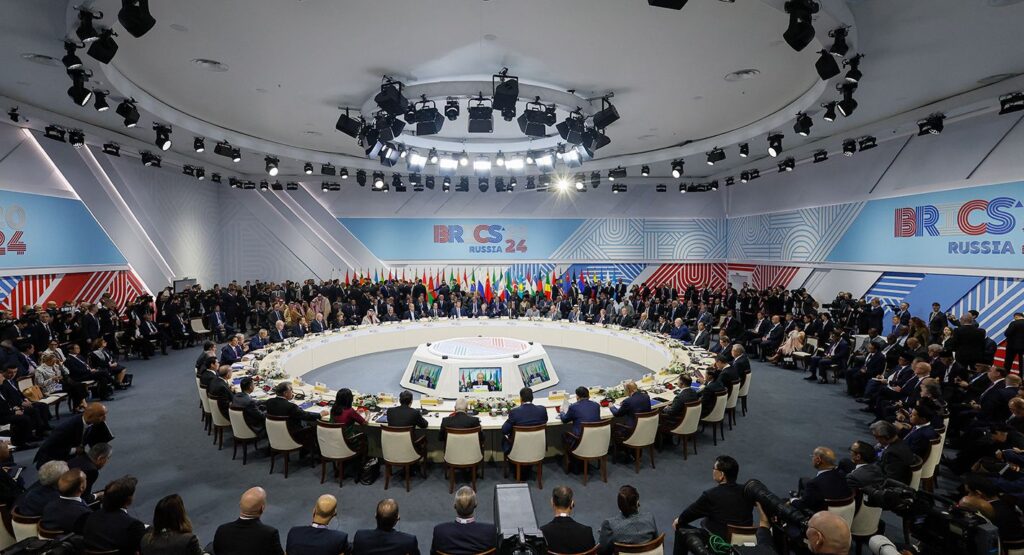The Great Dollar Divide: How China, Russia, and Allies Are Reshaping Global Trade and Finance in 2025
The great dollar divide is sweeping the world economies. Imagine a world where the U.S. dollar no longer reigns supreme in global trade-a world where the economic choices of China, Russia, and their allies ripple through markets, boardrooms, and even your local grocery store. This isn’t just a distant possibility; it’s a reality that’s unfolding right now, changing how nations do business and how ordinary people experience the global economy.

The Genesis of the Trade Conflict
The seeds of today’s trade conflict were sown years ago, but they sprouted in earnest in 2018, when the U.S. began imposing tariffs on Chinese goods, citing unfair trade practices and intellectual property theft. China, in turn, retaliated with its own tariffs, setting off a tit-for-tat escalation that soon became known as the U.S.–China trade war.
For many, this was more than just a headline. Take, for example, an Iowa soybean farmer. For years, China was the biggest buyer of American soybeans. When tariffs hit, the farmer’s business dried up almost overnight, leaving him with unsold crops and falling prices-a stark reminder of how global disputes can hit home.
China’s Warning to Global Partners
As the trade war escalated, China began sending clear signals to other countries: supporting U.S. trade actions against China could bring consequences. In 2025, China’s Ministry of Commerce warned that nations aligning with Washington’s agenda might face reciprocal countermeasures. The message was sharp-backing the U.S. could mean economic pain.
At the same time, China launched diplomatic initiatives across Asia and beyond, offering incentives to countries that resisted U.S. pressure and warning of consequences for those who didn’t. Picture a Vietnamese electronics manufacturer caught in the middle, trying to keep both American and Chinese partners happy while navigating higher costs and uncertain demand.
Global Economic Repercussions
The impact of the great dollar divide conflict has been seismic. Supply chains have been disrupted, making it more expensive for companies to import and export goods. Tariffs have driven up prices for consumers and businesses alike, especially in sectors like agriculture and technology.
The agricultural sector, for instance, has been hit especially hard. U.S. farmers lost a massive export market in China, leading to lower prices and financial hardship. Meanwhile, the smartphone industry-where devices are designed in the U.S., assembled in China, and sold worldwide-has faced delays, increased costs, and new uncertainties.
Financial markets have also felt the shock. The uncertainty has led to market volatility and fears of a global recession, with the World Trade Organisation warning that the conflict could slash trade between the U.S. and China by as much as 80%.
China and Japan’s Retreat from U.S. Treasury Bonds
One of the most dramatic financial shifts has been the move by China and Japan to reduce their holdings of U.S. Treasury bonds. As of early 2025, China’s holdings fell to $759 the lowest since 2009-while Japan’s dropped to $1.07 trillion. This $300 billion gap in Treasury auctions has pushed up yields, making it more expensive for the U.S. government to borrow money.
Higher Treasury yields have led to increased mortgage rates for American homeowners and have made it costlier for businesses to borrow. The Federal Reserve has tried to stabilize markets through quantitative easing, but the underlying issue remains: as major foreign buyers step back, the U.S. faces higher borrowing costs and new economic vulnerabilities.
China’s Strategic Economic Initiatives
China hasn’t just reacted to U.S. pressure; it’s been proactive. The government has rolled out policies to boost domestic consumption, making its economy less dependent on exports. It’s also pushed for technological self-sufficiency, investing heavily in advanced manufacturing and innovation.
Perhaps most notably, China has sought to diversify its trade partnerships, strengthening ties with countries in Southeast Asia, Africa, and Europe. The Belt and Road Initiative, for example, has opened new markets for Chinese companies and deepened economic relationships across continents.
Abandoning Dollar Trade: The Rise of De-Dollarisation
The most profound shift, however, is the move away from the U.S. dollar in global trade trend known as de-dollarisation. China, Russia, and their allies are at the forefront of this movement.

Russia-China Trade Without the Dollar
Today, over 90% of Russia-China trade is settled in yuan or rubles, compared to 90% in dollars just a decade ago. This change accelerated after Western sanctions on Russia in 2022, which cut Moscow off from dollar and euro transactions. Now, energy deals between the two nations are priced in their own currencies, with China becoming Russia’s largest oil buyer.
Expanding Yuan Agreements
Pursuing the great dollar divide policies, China’s central bank has signed currency swap agreements with more than 40 countries, promoting the use of the yuan in global trade. The yuan’s share in global trade has doubled since 2019, with sanctioned nations like Iran and Russia leading the way.
At their October 2024 summit in Kazan, Russia, the original five members of the BRICS coalition—Brazil, Russia, India, China, and South Africa—welcomed four new members into their fold four new members: Egypt, Ethiopia, Iran, and the United Arab Emirates (UAE). In January 2025, Indonesia became the bloc’s tenth member. Nine other nations have been officially designated as “partner countries,” and some two dozen have either been invited to join (for example, Saudi Arabia) or expressed interest in doing so (for example, Türkiye). BRICS states including Russia have touted the group’s expansion as a defining moment, heralding the dawn of a post-Western world order in which the “global majority” is finally empowered.
New Trade Routes and Alliances
Russia is investing in alternative trade routes, such as the North-South Corridor through Iran and the Caspian Sea route to Kyrgyzstan, to bypass Western-controlled shipping lanes and payment systems. Meanwhile, BRICS nations are exploring local currency trade and even gold-backed trading systems.
Motivations and Challenges
Why are these countries moving away from the dollar? The main reasons behind the great dollar divide are to evade sanctions, reduce financial vulnerability, and counter U.S. influence. Russia’s central bank has slashed its dollar reserves, while China is diversifying its massive reserves into gold and yuan-denominated assets.
But there are challenges. Russia’s reliance on the yuan has led to liquidity issues, and the yuan’s strict capital controls limit its utility as a global reserve currency. Despite these efforts, the dollar still accounts for nearly 60% of global reserves, and a full-scale shift away will take years.
Broader Implications for International Trade Relations
The de-dollarisation trend is fragmenting the global economy into competing blocs. While the dollar remains dominant, reduced demand for U.S. Treasuries could raise borrowing costs in the U.S. and force policymakers to rethink their strategies.
For businesses and governments, the message is clear: diversify suppliers, monitor policy changes, invest in innovation, and build strategic partnerships to navigate the new landscape.
Anecdote: The Apparel Industry’s Pivot
Consider the apparel industry. Many brands that once relied on Chinese factories are now sourcing from Bangladesh or Indonesia. This shift has created new opportunities in those countries but also brought growing pains as companies adjust to new partners and regulations.
Looking Ahead: The Future of Global Trade
The world is at a turning point. The trade conflict between the U.S. and China, the retreat from dollar-based trade, and the rise of new economic alliances are reshaping the global economy. While the dollar’s dominance is far from over, the trend toward de-dollarisation is unmistakable; its consequences will be felt for years to come.
As we watch these changes unfold, one thing is certain: the choices made by governments, businesses, and individuals today will shape the future of global trade and finance for generations.
References
This article draws on current events, economic data, and expert analysis to provide an accessible overview of the shifting landscape in global trade and finance.
- https://copyhackers.com/2016/02/how-to-write-engaging-content/
- https://commonslibrary.org/writing-engaging-articles/
- https://www.linkedin.com/pulse/15-guidelines-writing-engaging-article-murtuza-ali-keshavani-1d
- https://www.walkersands.com/article/7-easy-tips-for-effective-content-writing/
- https://www.linkedin.com/pulse/writing-engaging-article-brad-patterson-4i8ff
- https://www.linkedin.com/pulse/secret-writing-engaging-articles-5-tips-from-writer-mohammad-irfan
- https://blogs.backlinkworks.com/the-art-of-crafting-an-engaging-article-top-tips-and-tricks/
- https://aicontentfy.com/en/blog/techniques-for-engaging-readers-in-article-writing

